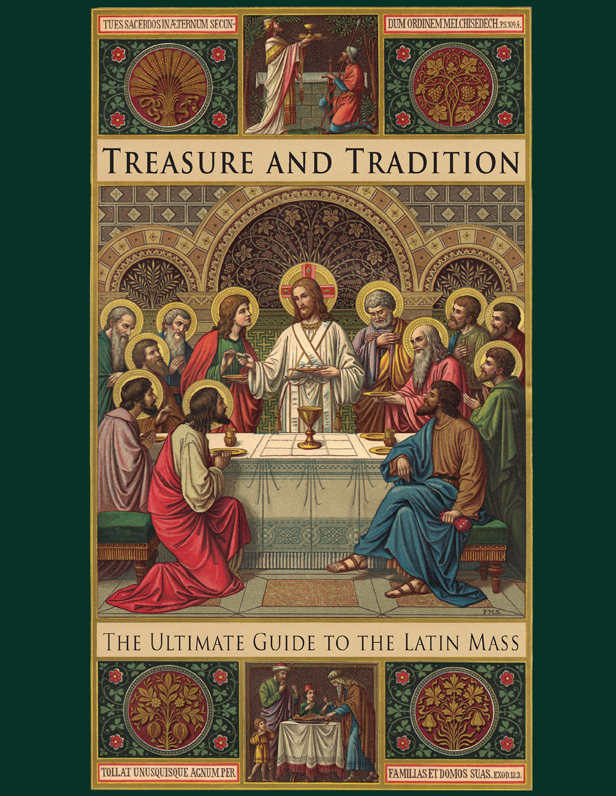The following Text is from Wikipedia - the free encyclopaedia,
unless otherwise stated.
The Espousals of The Blessed Virgin Mary, or, Marriage of The Virgin Mary, is a Feast that is Celebrated in certain parts of The Roman Catholic Church. It was removed from many Local Calendars by The Sacred Congregation of Rites. It was formerly generally observed on 23 January.
The following Text is taken from CATHOLIC ENCYCLOPEDIA
A Feast of The Latin Church, it is certain that a real Matrimony was contracted by Joseph and Mary. Mary is called "Espoused" to Joseph ("His Mother, Mary, was Espoused to Joseph", Matthew 1:18) because the Matrimony was never consummated.
The term "Spouse" is applied to married people until their marriage is consummated (Colvenerius, Cal. Marian., 23 Jan.). Peter d'Ailly, Chancellor of The University of Paris. (+ 1420), and his famous disciple, Jean Charlier, called Gerson, were the first energetic propagators of The Devotion in Honour of Saint Joseph.
English: Marriage of The Virgin,
Church of Saint-Quiriace de Provins,
Département Seine-et-Marne (Île-de-France), France.
Deutsch: Bleiglasfenster in der Stiftskirche Saint-Quiriace in Provins, einer
Gemeinde im Département Seine-et-Marne (Île-de-France), Darstellung:
Geschichte des Joseph, untere Szene rechts: Heirat Josephs und Marias.
Photo: 4 June 2011.
Source: Own work.
Author: GFreihalter.
(Wikimedia Commons)
Gerson worked many years to effect the institution of a special Votive Feast (Thursday of Ember Week in Advent), the object of which should be The Virginal Espousal of Mary and Joseph. Gerson's friend, Henry Chicoti, Canon of The Cathedral Chapter of Chartres, had bequeathed a certain sum for the Celebration in the Cathedral of this Votive Feast, for which Gerson had composed a Proper Office. It seems that Gerson carried out the will of his friend, but Tradition does not tell us on what day the Feast was Celebrated.
The first definite knowledge of a Feast, in Honour of The Espousals of Mary, dates from 29 August 1517, when, with nine other Masses in Honour of Mary, it was granted by Pope Leo X to the Nuns of The Annunciation, Founded by Sainte Jeanne de Valois. This Feast was Celebrated on 22 October as a Double of The Second-Class. Its Mass, however, Honoured The Blessed Virgin exclusively; it hardly mentioned Saint Joseph and, therefore, did not correspond to the idea of Gerson.
The first definite knowledge of a Feast, in Honour of The Espousals of Mary, dates from 29 August 1517, when, with nine other Masses in Honour of Mary, it was granted by Pope Leo X to the Nuns of The Annunciation, Founded by Sainte Jeanne de Valois. This Feast was Celebrated on 22 October as a Double of The Second-Class. Its Mass, however, Honoured The Blessed Virgin exclusively; it hardly mentioned Saint Joseph and, therefore, did not correspond to the idea of Gerson.
Also, purely as a Feast of Mary, it appears in The Missal of The Franciscans, to whom it was granted 21 August 1537, for The Feast Day of 7 March (Double Major). About the same time, The Servites obtained The Feast for 8 March. The Office of The Nativity of Mary was recited, changing the word Nativilas to Desponsatio.
After The Religious Orders, among the Dioceses which adopted The Feast of The Espousals of Mary, Arras, France, takes the lead. It has been kept there since 23 January 1556. The first Proper Office was composed by Pierre Doré, O. P. (+ 1569), Confessor of Duke Claude of Lorraine. This Office followed the outlines given by Gerson and Commemorated both Joseph and Mary.
Pierre Doré, in 1546, unsuccessfully petitioned Pope Paul III to extend The Feast of The Desponsatio Beatæ Mariæ Virginis to The Universal Church. But, even without the recommendation of The Apostolic See, The Feast was adopted by many Churches. In Moravia, it was, in the 16th-Century, kept on 18. July. In subsequent times, Rome did not favour any further extension of The Feast, but, after it had been refused (1655) to The King of Spain, it was granted to The German Emperor for Austria on 27 January 1678 (Feast Day 23. January); in 1680, it was conceded to Spain, but Transferred on 13 July, 1682 to 26 November, because, in Spain, The Feast of Saint Ildephonsus, or, Saint Raymond, is kept on 23 January.
In 1680, it was extended to the entire German Empire, in 1689 to The Holy Land (Double of The Second-Class). In 1702, to The Cistercians (Feast Day 20 February), in 1720, to Tuscany, and, in 1725, to The Pontifical States.
In our days (Editor: This Text was written circa 1907, prior to The Liturgical Reforms propagated by Pope Saint Pius X in 1911), it is kept in nearly the entire Latin Church on 23 January, in Spanish-speaking Countries on 26 November, but it has never been extended to The Universal Church.
Since Pope Saint Pius V abolished The Office of Pierre Doré and introduced the modern Office, it is, again, a Feast of Mary. The Commemoration of Saint Joseph, in Mass, Vespers, Lauds (Decree,
5 May 1736) can only be made by a special privilege.
The following Text is taken from THE MUNIMENT ROOM
and shows The Liturgy for The Third Sunday After Epiphany, and the next day, in 1865.
22 SUNDAY Third After Epiphany, Semi-Double, Second Prayers of The BVM, Third Prayers for The Church or The Pope. Green. First Vespers of The Espousals of The BVM, Commemoration of The Sunday and of Saint Emerentiana, Virgin, Martyr. White.
23 Monday The Espousals of The BVM, Greater-Double. Second Prayers of Saint Emerentiana, Virgin, Martyr, Creed, Preface of The BVM. White. Plenary Indulgence.























